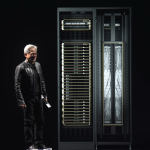
Your favourite films of all time might be at risk of digital revision – for a very lucrative cause.
Though many of us have learned to tune out, these days it’s near impossible to get through a film or TV show without various products and brands subtly seeping into our consciousness.
Product placement is an industry that data analysts estimate is worth about $27 billion each year.
Not content with taking a punt on new productions, the advertising industry is setting its sights on the classics.
Advertisers are using computer-generated images to digitally add products into films that have already been shot.
The lunch scene from The Breakfast Club could now feature resident good-girl Claire eating her lunch from Sushi Sushi.
You might spy an inflatable beach toy from Clark Rubber in the background of Jaws.
Cadbury’s Roses chocolates could make it into the memorable, ‘Life is like a box of chocolates’ scene in Forrest Gump.
And then, after a few months, advertisers might change it to Lindt or Ferrero Rocher.
A California-based organisation is expanding on the technology and creating a hybrid that displays products based on your consumer profile.

Ryff CEO Roy Taylor said the targeted advertising would be similar to that used by many websites today, where your search history is harvested to individually market products to you.
Anyone using a smart TV or laptop to watch Netflix, Stan or Amazon Prime (so, all of us), could become an unwitting part in this marketing ploy.
Suddenly, those new boots you Googled last week might horrifyingly appear in the corner of Elle Woods’ closet, as you’re watching Legally Blonde.
Scott Seddon, president of Independent Cinemas, told The New Daily that movie fans and cinephiles would object and kick up a fuss.
“If you’re going to change the brand of bourbon that Humphrey Bogart drinks in Casablanca, I can see why people would get upset with that because they feel that you are desecrating a sacred cow,” Seddon said.
“Similar things happen with classics that have been coloured electronically … there are a lot of people who criticise it because it was born in black and white and you shouldn’t have defaced it by making it colour.”
Subtle screen sales
Spearheading the initiative is UK-based advertising agency Mirriad, whose clients include TV show Modern Family, and a Chinese streaming service.
Mirriad chief executive Stephan Beringer said the company developed the process after working in special effects, and believes it is only a matter of time before the trend catches on.
“We started out working in movies,” Mr Beringer told BBC.
“Our chief scientist Philip Mclauchlan with his team, came up with the technology that won an Academy Award for the film Black Swan.”
He said the technology was seamless.
“The technology can ‘read’ an image. It understands the depth, the motion, the fabric, anything,” Mr Beringer said.
“So you can introduce new images that basically the human eye does not realise has been [added] after the fact, after the production.”
But it’s not just films and TV shows we have to keep an eye on.
Musicians eager to make an extra buck can strike deals with advertisers to include products in their music videos, long after the cameras stop rolling.
One Colombian singer has done just that.
Giovanny Ayala was one of the first artists to sample Mirriad’s technology, which allowed Mexican brewer Tecate to include its bottles and logo to appear in his music videos.
See if you can spot the brand below.
Mirriad vice president of brand partnerships Maria Teresa Hernandez said the company was selective about which brands made the cut.
“It’s a priority for Mirriad to authentically align brands to not only the right content, but the right moments,” Ms Hernandez said.
“Tecate and Ayala are a great example of an authentic partnership of brand and artist that will resonate and enrich the relationship with their loyal audiences.”
The post Product placement might be about to ruin your favourite films of the past appeared first on The New Daily.
Powered by WPeMatico





